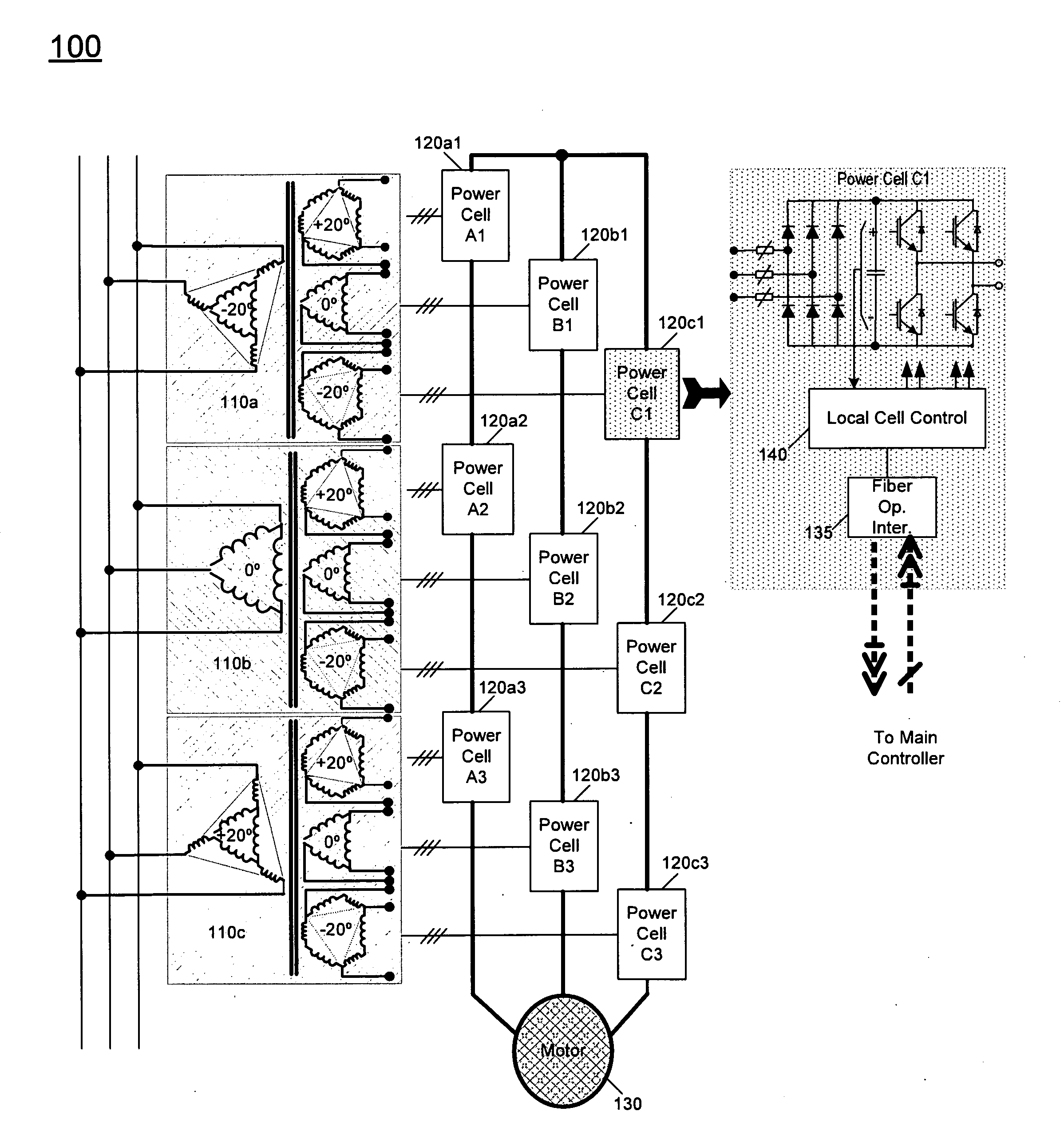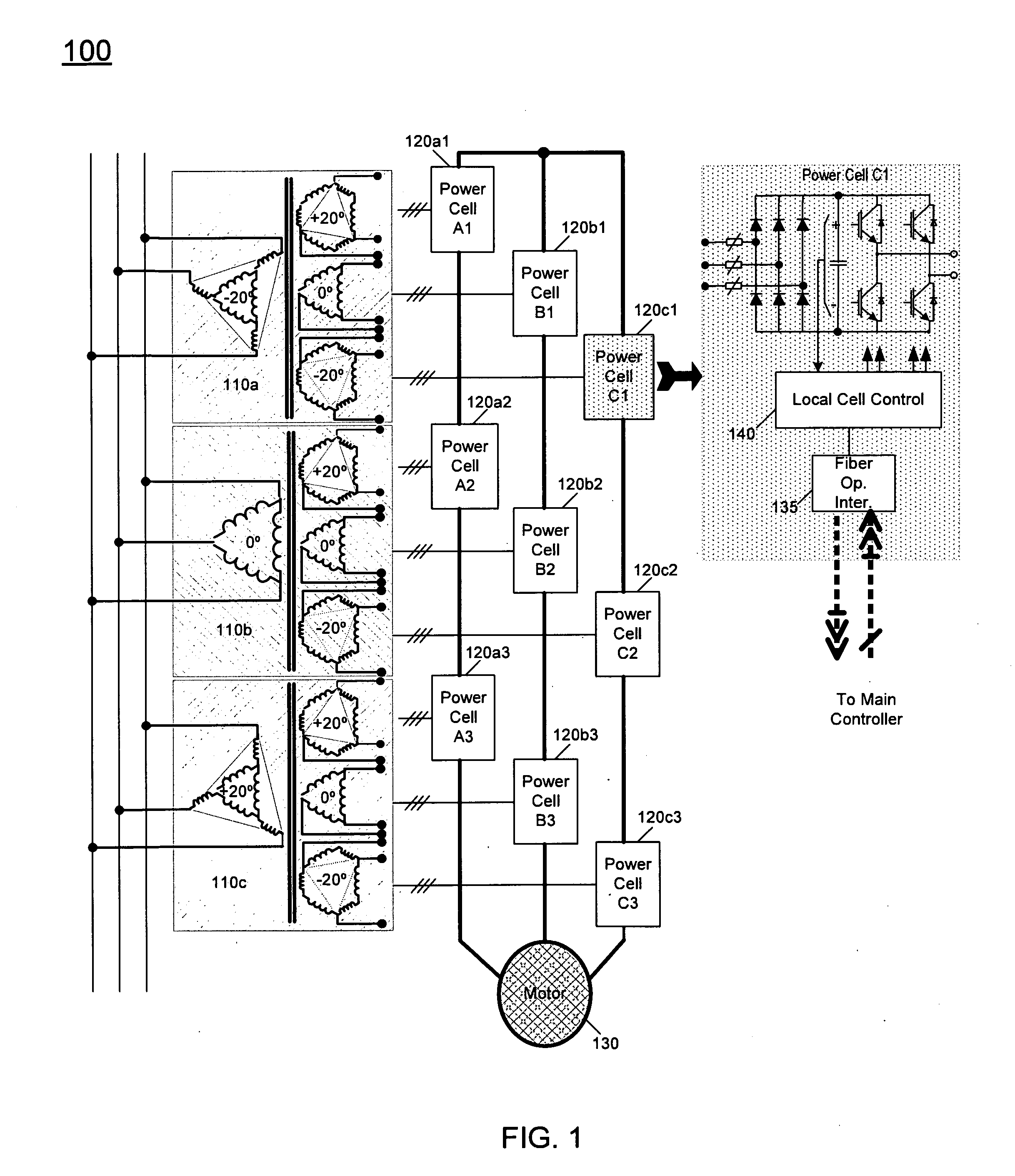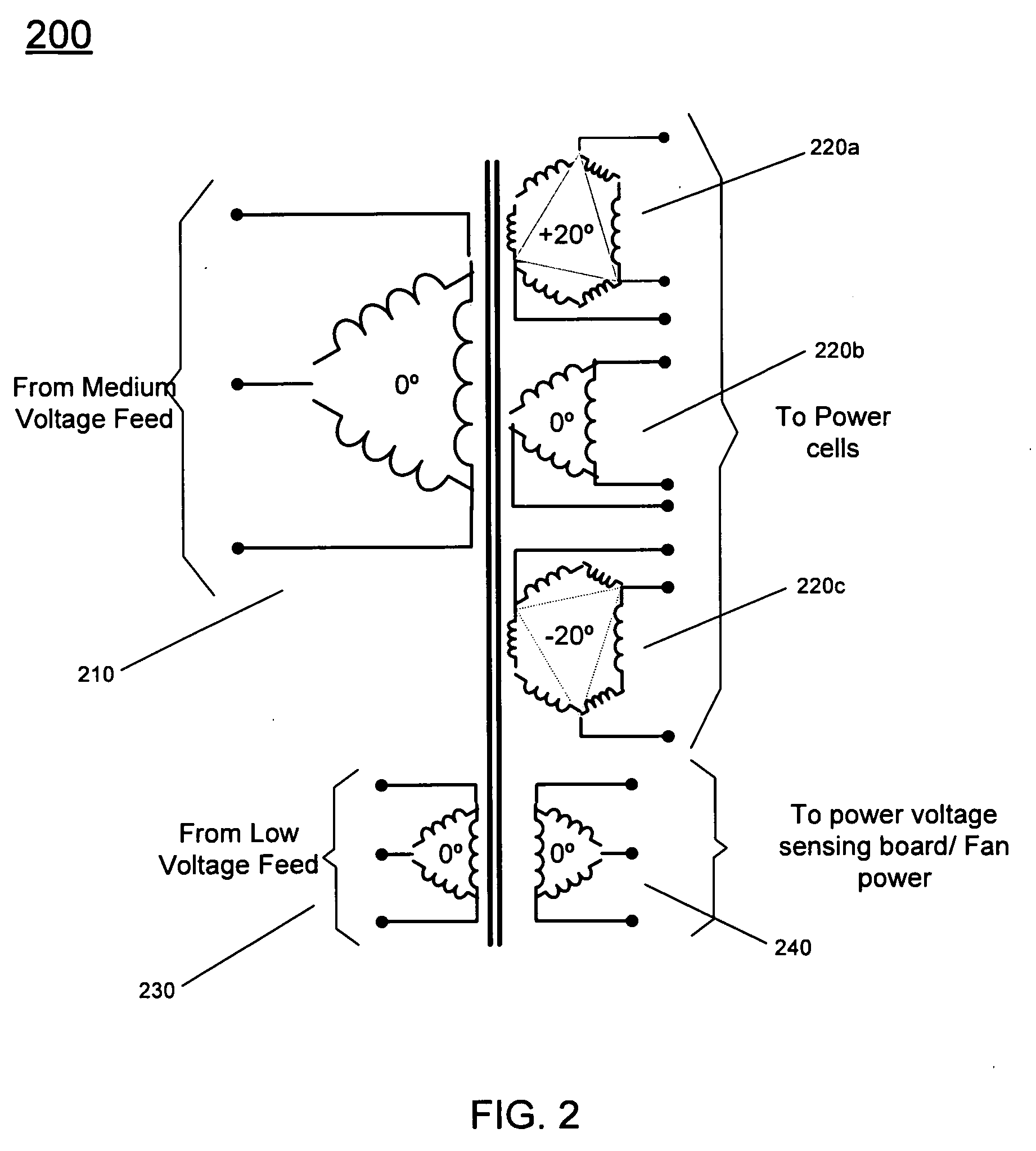Pre-Charging An Inverter Using An Auxiliary Winding
a technology of inverter and auxiliary winding, which is applied in the direction of automatic control, process and machine control, instruments, etc., can solve the problems of converter fuses, voltage ripple in the dc bus, and significantly reduce the reliability and life expectancy of the modules
- Summary
- Abstract
- Description
- Claims
- Application Information
AI Technical Summary
Benefits of technology
Problems solved by technology
Method used
Image
Examples
Embodiment Construction
[0019]In various embodiments pre-charging of cascaded medium voltage drives (both symmetric and asymmetric) can be realized using an auxiliary power source, such as provided through an auxiliary coil of a transformer module of the drive. In so doing, pre-charging can be realized with less complexity, less part count, and less cost over existing methods. In addition to pre-charging, one or more auxiliary sources such as one or more auxiliary windings can be used for voltage sensing (e.g., via an integrated voltage sensing winding) and / or for supplying power to cooling fans or other non-power related portions of a drive.
[0020]Referring now to FIG. 1, shown is a block diagram of an inverter in accordance with an embodiment of the present invention. More specifically, FIG. 1 shows an implementation of a cascaded medium voltage inverter for a three-phase motor. As shown in FIG. 1, inverter 100 may include modular transformers 110a-110c with passive phase shifting, realized by both phase ...
PUM
 Login to View More
Login to View More Abstract
Description
Claims
Application Information
 Login to View More
Login to View More - R&D
- Intellectual Property
- Life Sciences
- Materials
- Tech Scout
- Unparalleled Data Quality
- Higher Quality Content
- 60% Fewer Hallucinations
Browse by: Latest US Patents, China's latest patents, Technical Efficacy Thesaurus, Application Domain, Technology Topic, Popular Technical Reports.
© 2025 PatSnap. All rights reserved.Legal|Privacy policy|Modern Slavery Act Transparency Statement|Sitemap|About US| Contact US: help@patsnap.com



